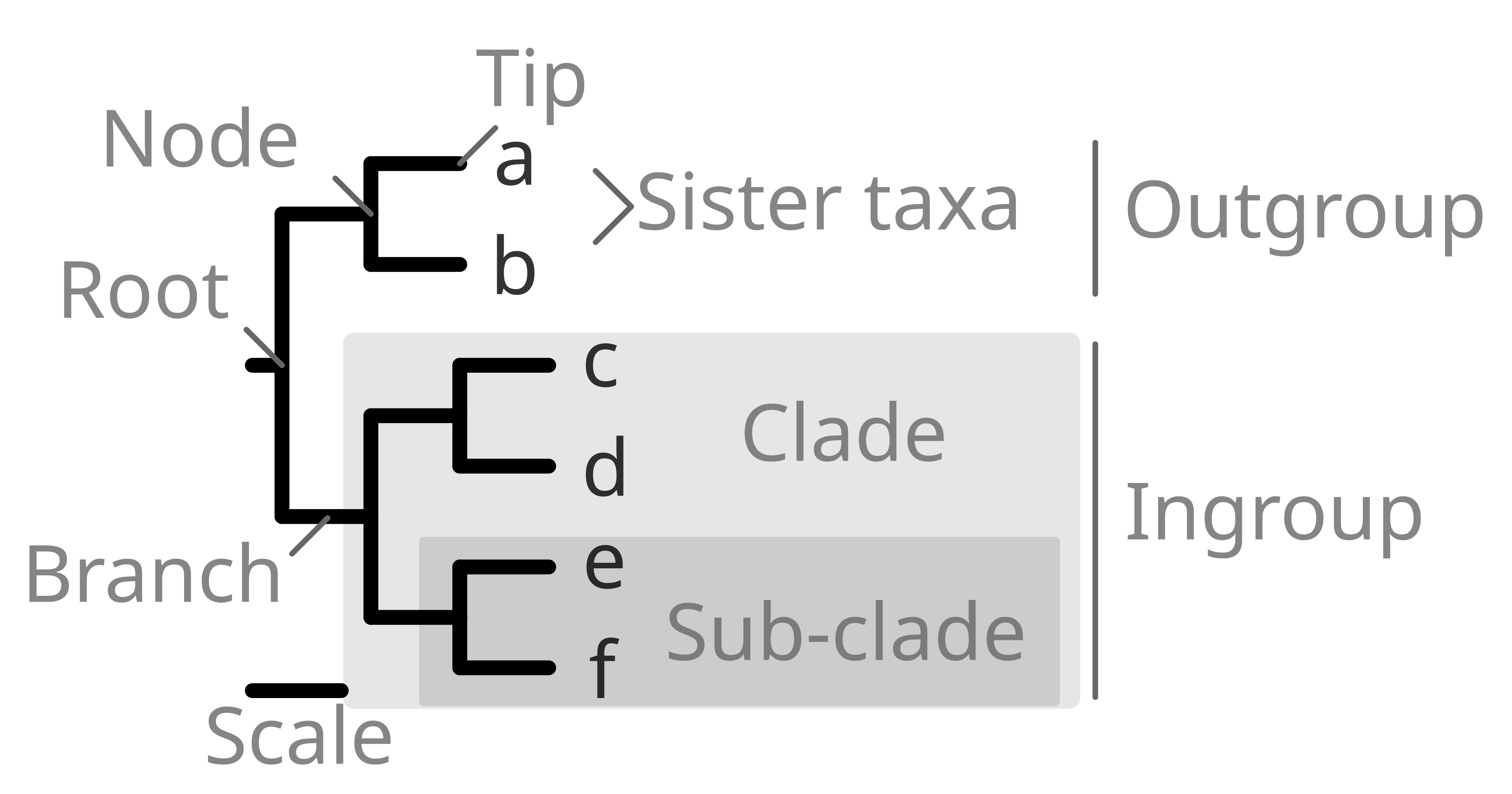What is a phylogenetic tree?#
The simplest answer is a hypothesis on the evolutionary relationships among the studied set of taxa or phylogenetic species, understanding such species as genes, proteins or specific morphological traits.
A phylogenetic tree represents a comparative analysis that measures the accumulated change between pairs of species, normally measured in rate of nucleotide substitution and interpreted as evolutionary change. In this sense, the phylogenetic distance between two given species is the accumulated horizontal length between them, independently of their vertical position in the tree.
Briefly, the structure of a tree is rather simple. A phylogenetic tree assumes a bifurcating diversification in which a given branch splits into two branches in one given node. Each node and all its descendent taxa correspond to a (monophyletic) clade. A node with no further descendents is a terminal node and is frequently called tip or leaf of the tree, representing the phylogenetic species.

